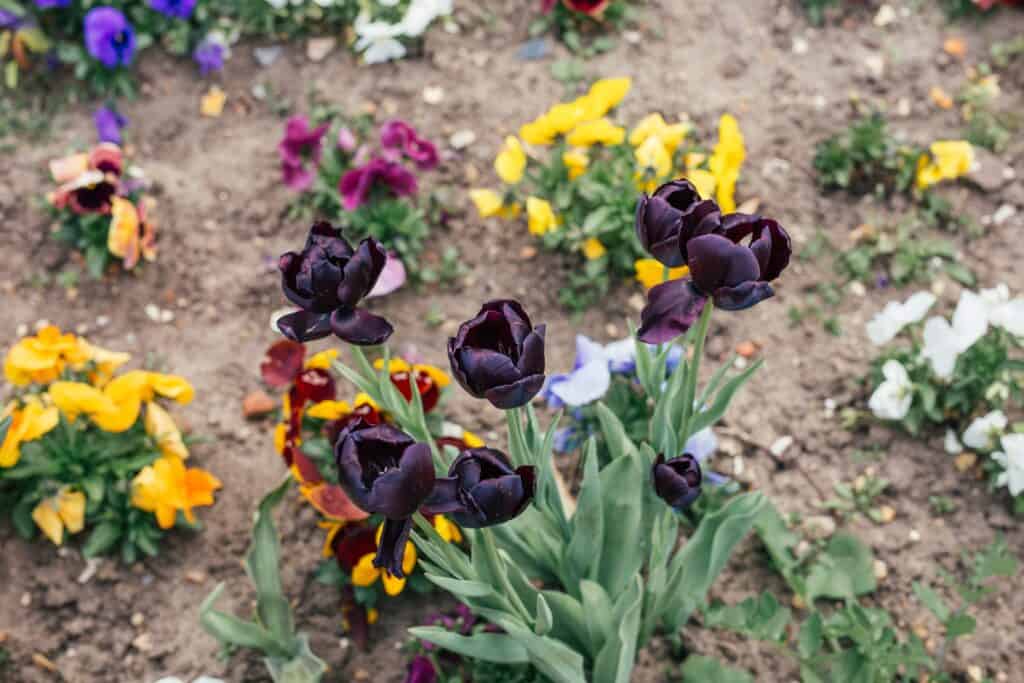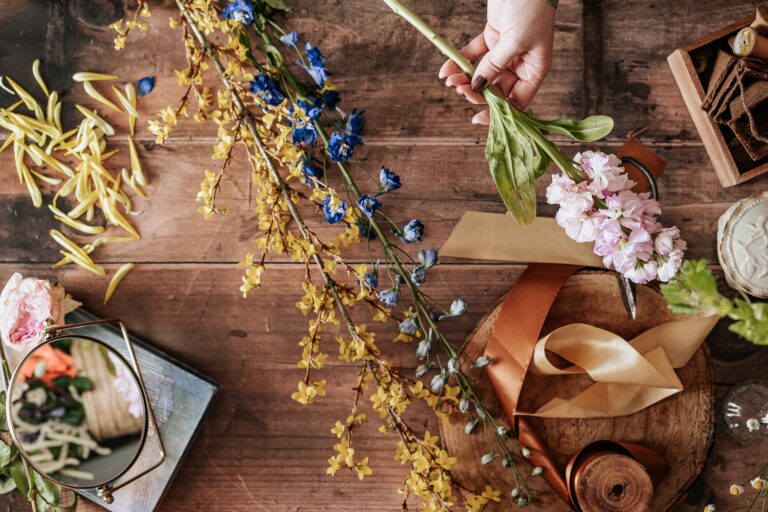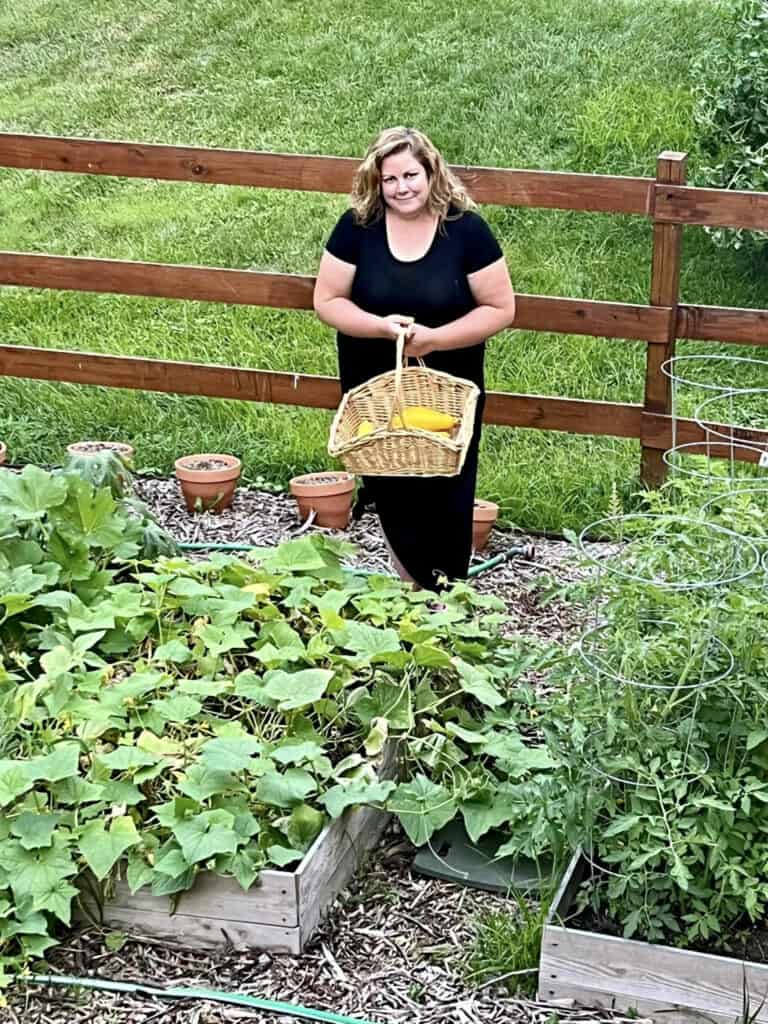Planting Bulbs in the Fall for Spring Flowers
Last spring and summer I had some massive FOMO (fear of missing out) when I saw all of my neighbor’s beautiful bulbs blooming. I had almost none. To remedy this, I just ordered a ton of bulbs for my yard that I’ll be planting this fall. I will have a beautiful flowering yard in the spring!
Why Should Bulbs Be Planted in the Fall?
Planting bulbs in the fall is a strategic gardening move that promises vibrant spring blooms. As the weather cools, this is the perfect time to tuck bulbs like tulips, daffodils, and crocuses into the soil. Doing this will give you a burst of color when winter finally gives way to spring. Fall planting allows bulbs to establish strong root systems during the cooler months. This leads to healthy growth and robust flowering in the spring. It’s a forward-thinking investment in a beautiful garden and yard.

Where Should Bulbs Be Planted?
Choosing the right location for planting bulbs is crucial for a successful and stunning garden display. When deciding where to plant bulbs, consider the specific requirements of each bulb variety. Sun-loving bulbs like tulips and daffodils thrive in areas with ample sunlight. Pay attention to soil conditions too; well-drained soil is essential to prevent bulb rot. Additionally, think about the visual impact you want to create. Planting in clusters or along borders can make a striking statement, while scattering bulbs throughout your garden can provide a more natural look. Thoughtful consideration of your design goals will help you determine the perfect spot for your beautiful flowering bulbs.

What are the Permaculture Benefits of Planting Bulbs?
Planting bulbs offers a wealth of permaculture benefits that can transform your garden into a sustainable oasis. Beyond the immediate beauty they bring, bulbs like daffodils, tulips, and crocuses play a crucial role in permaculture’s principles of resourcefulness and resilience. These perennial plants come back year after year, reducing the need for constant replanting and minimizing the disturbance of the soil. Additionally, heirloom bulbs often attract pollinators, supporting biodiversity in your garden. As they bloom in early spring, they provide a vital food source for bees and other beneficial insects. This kickstarts the seasonal cycle of pollination and plant growth.
Some bulbs, like daffodils, are toxic to deer, rabbits and squirrels. I will be planting daffodils in my fruit tree guilds this year to provide an extra layer of protection for my orchard. (You can read more about my tree guilds here and here.)

Are Flower Bulbs Edible?
Unfortunately, most flower bulbs that we plant for their beauty are not edible. Saffron, one of the world’s most valuable spices, comes from the vibrant red stigmas of the Crocus sativus flower. If you’ve ever tasted the Spanish dish paella, you’ve likely had this spice. Even though bulbs cannot be used for food or medicinal uses, they are still beautiful.

How Do You Plant Bulbs?
Begin by selecting a suitable location that matches the sunlight requirements of the specific bulb variety you are planting. You should be able to obtain this information on the package. Dig a hole to the recommended depth, typically two to three times the bulb’s height. Place the bulb with its pointed end facing upward. Cover it with soil, pat it down gently, and water thoroughly to settle the soil and provide moisture. Remember to space bulbs according to the recommended distance between them, and consider planting in clusters or rows for a more dramatic effect.

Most bulbs can also be planted in pots. Select a container with drainage holes, fill it with well-draining potting mix, and place the bulbs at the appropriate depth with their pointed ends up. Water thoroughly, place the pot in a sunny spot, and enjoy the display of blooms on your porch or balcony. Be sure to leave your potted bulbs outside for the winter as they need a cold season to “trigger” them to bloom at the appropriate time in the spring.
What are the Most Common Types of Bulbs?
When it comes to popular types of bulbs for planting, a few timeless favorites stand out. Tulips, with their vibrant colors and diverse varieties, have long been cherished for their beauty. Daffodils, with their cheerful yellow blossoms, are another popular choice. Hyacinths offer a delightful fragrance and come in a range of colors, making them a great pick for both visual and scent appeal. Crocuses, known for their early spring emergence, add a splash of color to gardens waking up from winter’s. Some people even replace their entire yard with crocuses!

This year, I ordered several varieties of daffodils, irises, and even some black tulips for my yard. (You can find the black tulips I ordered here.). I can’t wait to see the color they will add to my yard in the spring. What are your favorite flower bulbs? Leave me your recommendations in the comments!






